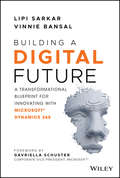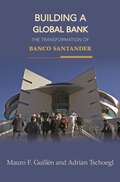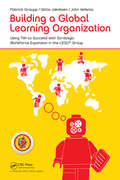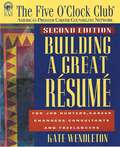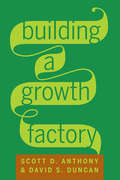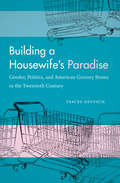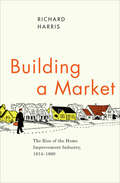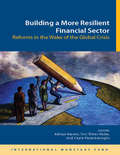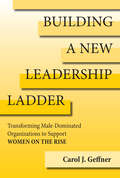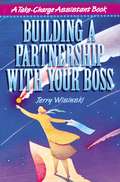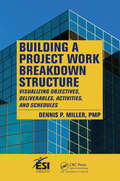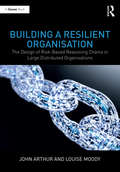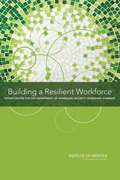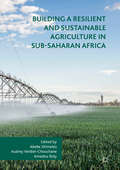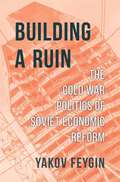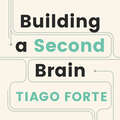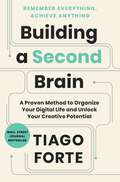- Table View
- List View
Building a Developmental Culture: the Birth of Deloitte University
by Boris Groysberg Maureen Gibbons Joshua BronsteinIt is October 2009 and Barry Salzberg, CEO of Deloitte LLP, has just returned from the groundbreaking of Deloitte University. When completed, Deloitte University would be a world class learning and development center owned by, and for the exclusive use by the employees of, Deloitte. Deloitte spent a significant amount of time and money on the training and development of its employees. Historically, this training had taken place at hotels and conference centers, not affiliated with Deloitte. The idea for the construction of a special-purpose, Deloitte-owned learning facility had been championed by Salzberg. He believed Deloitte University would allow the firm to "instill our values in our people through learning and development" which he thought was critical to Deloitte's long-term success. Salzberg had won over the necessary majority of the partners, but not all of them supported the University concept. As he thought about the future of this new facility, how could he ensure it would be successful?
Building a Digital Future: A Transformational Blueprint for Innovating with Microsoft Dynamics 365
by Lipi Sarkar Vinnie Bansal2020 has been a challenging year worldwide for many businesses and we have not come out of that phase entirely in 2021.At the same time, we witnessed the acceleration of Cloud led Digital Transformation, changing the ways we work, communicate, collaborate, and share our workspace and creating a globally accepted new normal. More than ever before, senior management and leadership teams need to identify a rigorous approach, drive competitive advantage for their business, create value addition, and become more effective in this work from home, zoom-based collaboration and still achieve our business metrics, which have also naturally evolved due to the global pandemic. Effective disruption is dependent on fast universal adoption, then only it will be real and the transformation will be effective. Understanding the key drivers of change, leveraging the powerful capabilities from technologies with a collaborative platform can aid an organization to prepare for digital transformation. Building a Digital Future provides a clearly defined roadmap for executing this change. Based on their industry experience of leading and implementing digital transformation globally, authors Lipi Sarkar and Vinnie Bansal distil proven ideas, creating a blueprint of powerful and workable frameworks for executing a successful digital transformation with Dynamics 365 and accelerating businesses during a global pandemic. Each chapter of the book is curated with best practices, real life examples, pitfalls to avoid, and salient points to remember. This book enables organizations to truly embrace the benefits of digital transformation by anchoring Microsoft Dynamics 365 and Power Platform at the core of their business. The frameworks, examples and customer stories in the book revolves around how it drives faster disruption, enhances customer experiences, empowers overworked business users. The real-life customer stories across various sectors and countries (namely Virgin Atlantic, Etihad Airways, G&J Pepsi-Cola Bottlers, Breville, Heathrow Airport, Hickory Farms, Ste Michelle Wines and many more) brings an idea of key business challenges and the solutions implemented to address them. Building a Digital Future is written for C-suite stakeholders, senior management, Programme Directors or Managers, Implementation Consultants, and Business Managers who are considering a Digital Transformation to improve efficiencies across the business of finance and operation, supply chain, retail, and customer relationship management--sales, marketing, or services. This book covers Digital Transformation with the powerful technology platform Microsoft Dynamics 365 which offers process capabilities across all business areas, provides powerful tools to automate time-consuming tasks, and drives innovation and improvements through an evergreen system post implementation. The concepts of digital transformation are laid out and take you through a step-by-step transformation journey, highlighting any pitfall that you need to be aware of. Many Dynamics 365 books offer advice for implementation or mastering the system, but Building a Digital Future is the first complete playbook of how businesses can transform to thrive in the digital age. Building a Digital Future is the must-have guide to help your Dynamics 365 program.
Building a Digitized Platform: A Journey to Increased Value from IT
by Jeanne W. Ross Peter WeillAs your company begins to expand, whether domestically or internationally, it is important that standardized systems are organized for all branches to maintain efficiency. To do this, your company has to build a digitized platform which focuses on three main areas: a shared IT infrastructure, consolidated data centers, and enhanced IT governance. In this chapter, Weil and Ross outline four stages of organizational learning that must take place in order to create a digitized platform and achieve greater simplification and agility. They provide guidance for driving benefits from each stage and transitioning from one stage to the next on your journey to integrated digitized processes. This chapter was originally published as chapter 4 of "IT Savvy: What Top Executives Must Know to Go from Pain to Gain."
Building a Foundation of Novel Strategic Insights: Making Innovation a Systematic Capability
by Rowan Gibson Peter SkarzynskiHow do radical innovators come up with breakthrough ideas? In this chapter, the authors discuss four essential perspectives, or discovery lenses, and describe how innovators have used them to uncover powerful new insights and opportunities. Hands-on tools and techniques for using each lens, and specific criteria for evaluating the quality of prospective insights are included.
Building a Global Bank: The Transformation of Banco Santander
by Mauro F. Guillén Adrian TschoeglIn 2004, Spain's Banco Santander purchased Britain's Abbey National Bank in a deal valued at fifteen billion dollars--an acquisition that made Santander one of the ten largest financial institutions in the world. Here, Mauro Guillén and Adrian Tschoegl tackle the question of how this once-sleepy, family-run provincial bank in a developing economy transformed itself into a financial-services group with more than sixty-six million customers on three continents. Founded 150 years ago in the Spanish port city of the same name, Santander is the only large bank in the world where three successive generations of one family have led top management and the board of directors. But Santander is fully modern. Drawing on rich data and in-depth interviews with family members and managers, Guillén and Tschoegl reveal how strategic decisions by the family and complex political, social, technological, and economic forces drove Santander's unprecedented rise to global prominence. The authors place the bank in this competitive milieu, comparing it with its rivals in Europe and America, and showing how Santander, faced with growing competition in Spain and Europe, sought growth opportunities in Latin America and elsewhere. They also address the complexities of managerial succession and family leadership, and weigh the implications of Santander's stellar rise for the consolidation of European banking. Building a Global Bank tells the fascinating story behind this powerful corporation's remarkable transformation--and of the family behind it.
Building a Global Learning Organization: Using TWI to Succeed with Strategic Workforce Expansion in the LEGO Group
by Patrick Graupp Gitte Jakobsen John VellemaBuilding a Global Learning Organization: Using TWI to Succeed with Strategic Workforce Expansion in the LEGO Group describes how a multinational company developed a global structure for learning based on the TWI (Training Within Industry) program to create and sustain standardized work across multiple language and cultural platforms. In this book, Shingo Prize-winning author Patrick Graupp collaborates with two practitioners who performed the planning and implementation of the LEGO Group‘s worldwide Learning Organization.The book outlines the organizational and planning models used by the LEGO Group to create the internal ability to give and receive tacit skills and knowledge. Describing how and why TWI is used as the foundation for success in knowledge transfer across diverse languages and cultures, it provides step-by-step guidance on how to establish a solid organizational foundation for your own Learning Organization.Providing expert insight into the work of culture change, the book explains how to work with people to create motivation for moving to a new system of learning. It details the critical elements that made the implementation at the LEGO Group a success, identifies the stumbling blocks they encountered along the way, and explains how they were overcome. Case studies describe in detail what these efforts looked and felt like in actual application.The TWI program has long been recognized for its ability to generate results. After reading this book, you will gain valuable insight into how your organization whether large or small, national or international can integrate this timeless tool into your operating structure and your daily culture.
Building a Great Resume: For Job Hunters, Career Changers, Consultants, and Freelancers (2nd edition)
by Kate WendletonThe average resume is only looked at for ten seconds. Would you like yours to stand out? Would you like to learn how to highlight your strengths and hide your weaknesses? Would you like a marketing piece that dynamically presents you just the way you want prospective employers to see you? BUILDING A GREAT RESUME starts with an overview of The Five O'clock approach to job search. You'll learn to develop the accomplishment statements that form the backbone of your resume. You'll learn the most effective ways to present your experience. You'll learn how to write a summary that increases your chances of getting just the job you want. Your resume will be more exciting to the reader. BUILDING A GREAT RESUME helps you see the theory in practice by showing you scores of sample resumes. And this is the only resume book on the market to bring you case studies that teach you the nuances of how to think about resume preparation. The book is fully indexed by industry and profession so you can easily find the resumes that pertain to you. BUILDING A GREAT RESUME is based on the highly successful methods used at The Five O'clock Club, America's Premier Career Counseling Network, where the average participant finds a new job in less than 10 weeks. Kate Wendleton, a nationally syndicated careers columnist, is an authority on job search and career development. Kate has been a career coach since 1978 when she rounded The Five O'clock Club to help job hunters, career changers, and consultants at all levels. She is also the founder of-Workforce America, a not-for-profit organization serving adult job hunters in Harlem who are not yet in the professional or managerial ranks. A former CEO of two small companies. Kate has twenty years of business experience as well as an MBA.
Building a Growth Factory
by David S. Duncan Scott D. AnthonyIntroducing the Four Components That Make Innovation RepeatableEven the best-performing companies eventually stall. Sustaining momentum-and remaining a great growth company-takes a system.Scott Anthony and David Duncan call this system a "Growth Factory." They've seen it work in a small set of elite companies that have created environments where innovation is both repeatable and reliable, not relegated to an off-site or isolated division that has no real connection to the organization's future.In this HBR Single, Anthony and Duncan draw on their extensive experience working with these growth factory organizations-most notably Procter & Gamble and Citigroup. They highlight the four main components that make innovation repeatable and reliable, citing real examples of what P&G, Citi, and even their own firm, Innosight, have gone through to stay firmly on a path toward growth despite huge challenges. They offer practical advice on how you can put their system into action in your own company-whether it's a large multinational or a small start-up.HBR Singles provide brief yet potent business ideas for today's thinking professional. They are available digitally at HBR.org and through the Kindle Store, the iBookstore, and other ebooksellers.
Building a Growth Factory (Enhanced Edition)
by David S. Duncan Scott D. AnthonyIntroducing the Four Components That Make Innovation RepeatableEven the best-performing companies eventually stall. Sustaining momentum and remaining a great growth company takes a system.Scott Anthony and David Duncan call this system a "Growth Factory." In this HBR Single, which features video interviews from inside a small set of elite companies, the authors show how to get continual innovation and growth right.Anthony and Duncan draw on their extensive experience working with these growth factory organizations - most notably Procter & Gamble and Citigroup - to show environments where innovation is both repeatable and reliable, not relegated to an off-site or isolated division that has no real connection to the organization's future. In addition to relaying the four main components of a successful system, they cite real examples of what P&G, Citi, and even their own firm, Innosight, have gone through to stay firmly on a path toward growth despite huge challenges. Building a Growth Factory also offers practical advice on how to put this into action in your own company - whether it's a large multinational or a small start-up.HBR Singles provide brief yet potent business ideas for today's thinking professional.
Building a High Performance Culture at IDFC
by V. G. Narayanan Vidhya MuthuramIDFC was set up in 1997 to direct private finance to infrastructure projects in India. Over the years, it expanded its capabilities to become a 'complete solutions provider' offering financing solutions including debt and equity, investment banking, brokerage and asset management services to clients in the infrastructure sector. With nearly 50% of its employees joining through acquisitions, there were significant cultural differences within the company. In 2009, the company embarked on a journey to build 'One-Firm' with a unifying culture and governance system across business groups. IDFC aimed to provide seamless access to products and expertise across business groups, increase its competitive position and maximize interactions with its clients. A critical component of the One-Firm initiative was a technology enabled performance management system that articulated metrics for individual and group performance, and aligned these with the overall performance of IDFC. While the new system had several strengths, it also raised questions on whether a common system allowed IDFC to recognize and retain talent across its diverse businesses. This case examines if a uniform performance management system provided autonomy and flexibility needed to build a culture of high performance across varied business groups.
Building a Housewife's Paradise
by Tracey DeutschSupermarkets are a mundane feature in the landscape, but as Tracey Deutsch reveals, they represent a major transformation in the ways that Americans feed themselves. In her examination of the history of food distribution in the United States, Deutsch demonstrates the important roles that gender, business, class, and the state played in the evolution of American grocery stores. Deutsch's analysis reframes shopping as labor and embeds consumption in the structures of capitalism. The supermarket, that icon of postwar American life, emerged not from straightforward consumer demand for low prices, Deutsch argues, but through government regulations, women customers' demands, and retailers' concerns with financial success and control of the "shop floor. " From small neighborhood stores to huge corporate chains of supermarkets, Deutsch traces the charged story of the origins of contemporary food distribution, treating topics as varied as everyday food purchases, the sales tax, postwar celebrations and critiques of mass consumption, and 1960s and 1970s urban insurrections. Demonstrating connections between women's work and the history of capitalism, Deutsch locates the origins of supermarkets in the politics of twentieth-century consumption.
Building a Learning Organization
by David A. GarvinContinuous improvement programs are proliferating as corporations seek to better themselves and gain an edge. Unfortunately, however, failed programs far outnumber successes, and improvement rates remain low. That's because most companies have failed to grasp a basic truth. Before people and companies can improve, they must first learn. And to do this, they need to look beyond rhetoric and high philosophy and focus on the fundamentals. Three critical issues must be addressed before a company can truly become a learning organization: meaning, management, and measurement.
Building a Market: The Rise of the Home Improvement Industry, 1914–1960 (Historical Studies of Urban America)
by Richard HarrisA unique study of how the American Dream came to be—and came to be constantly updated and renovated: &”A pleasure to read.&”—American Historical Review Each year, North Americans spend as much money fixing up their homes as they do buying new ones. This obsession with improving our dwellings has given rise to a multibillion-dollar industry that includes countless books, magazines, cable shows, and home improvement stores. Building a Market charts the rise of the home improvement industry in the United States and Canada from the end of World War I into the late 1950s. Drawing on the insights of business, social, and urban historians, and making use of a wide range of documentary sources, Richard Harris shows how the middle-class preference for home ownership first emerged in the 1920s—and how manufacturers, retailers, and the federal government combined to establish the massive home improvement market and a pervasive culture of Do-It-Yourself. Deeply insightful, Building a Market is the carefully crafted history of the emergence and evolution of a home improvement revolution that changed not just American culture but the American landscape as well. &“An important topic that deserves to be widely read by scholars of business history, urban history, and social history.&”—Journal of American History
Building a Meritocracy at Alghanim Industries
by Paul M. Healy Esel Cekin Susanna GallaniBuilding on his father's legacy, Omar Alghanim (MBA 2002) had been working on strengthening a performance-driven culture based on meritocracy in the family business, Alghanim Industries. The task had been particularly challenging because of traditional Middle East practice of relying on relationships and influence to conduct business. Omar's vision attracted and empowered like-minded employees who were rewarded on merit and who delivered on the firm's mission of providing excellent service to its customers. Together, they revamped the company's performance and compensation system and established a well-structured control and compliance mechanism. The next challenge for Omar was to transform the workforce from a mono-culture, male-dominant expat community to a diverse mix of people, cultures, backgrounds, and viewpoints. In particular, he needed to find a way to attract talented women and local Kuwaitis to become part of his organization.
Building a Mishap-Free U.S. Navy
by Amy C. Edmondson Herman B. Leonard Michael Norris Michael W. ToffelIn 2021, Kevin "Bud" Couch, a retired Navy captain who was now working as a civilian employee of the Navy Safety Center, was trying to determine how best to reduce the risk of Navy mishaps. The Navy had experienced a series of major mishaps in 2017 that had led to a closer examination of how it operated and what it could improve.
Building a More Resilient Financial Sector: Reforms in the Wake of the Global Crisis
by Aditya Narain Ceyla Pazarbasioglu Inci Ötker-RobeThe IMF, with the Bank for International Settlements and the Financial Stability Board, has been at the forefront of discussions on reform of the global financial system to reduce the possibility of future crises, as well as to limit the consequences if they do occur. The policy choices are both urgent and challenging, and are complicated by the relationship between sovereign debt and risks to the banking sector. Building a More Resilient Financial Sector describes the key elements of the reform agenda, including tighter regulation and more effective supervision; greater transparency to strengthen market discipline and limit incentives for risk taking; coherent mechanisms for resolution of failed institutions; and effective safety nets to limit the impact on the financial system of institutions viewed as "too big to fail. " Finally, the book takes a look ahead at how the financial system is likely to be shaped by the efforts of policymakers and the private sector response.
Building a New Leadership Ladder: Transforming Male-Dominated Organizations to Support Women on the Rise
by Carol J. GeffnerStrategies for transforming workplace cultures to support a new generation of women leaders.When it comes to the gender gap, it is not enough to ask women to &“lean in&” and demand promotions and raises. Organizations have an obligation to level up and provide women with more opportunities for advancement. In this book, leadership and governance expert Carol Geffner makes a strong case that for women to reach their full potential, workplaces and their leaders must take a more proactive role in combating gender discrimination.Based on over 200 hours of interviews with women leaders in the United States and abroad, Building a New Leadership Ladder demonstrates that even when women are promoted to leadership positions, they are rarely given access to the same support networks as their male colleagues. Covering sectors as diverse as higher education, health care, law enforcement, and the military, the book identifies common strategies that all organizations can use to remove obstacles for women&’s advancement.More than a how-to guide on how women can ascend to the top, Building a New Leadership Ladder is a bold call to action for organizations and their leaders to proactively foster the conditions under which women&’s efforts to rise up are consistently recognized and rewarded.Interviewer:Dr. Carol Geffner, Director of the Executive Master of Leadership Program at the USC&’s Sol Price School of Public Policy Interviewees:Alma Burke, former LAPD, currently head of security at USCYasmin Beers, former City Manager, Glendale, CARaShall Brackney, Chief of Police, Charlottesville, VACoco Brown, CEO Athena Alliance (SaaS company for HR)Mary Sue Coleman, chemist, interim president of University of Michigan (she previously served as president from 2002-2014)France Cordova, director of National Science FoundationTiffany Felix, Senior Vice President, Environmental Health and Safety, ParamountJennifer Grasso, LAPD&’s first female SWAT officerHeidi Hammel, Executive Vice President of the Association of Universities for Research in AstronomyStephanie Jarvis, (couldn&’t immediately confirm her current role)Nannerl Keohane, former president of Wellesley College and Duke UniversityFiona Ma, California State TreasurerAnni Mu, Deputy Group Commander, CA Air National GuardLaura Mosqueda, Professor of Family Medicine and Geriatrics at USC Keck School of MedicineJanet Napolitano, former Arizona governor, former Secretary of Homeland SecuritySharon Papa, Chief of Police, Hermosa Beach, CAEllen Stofan, Under Secretary for Science and Research, The SmithsonianMirtha Villereal-Younger, multiple leadership roles within CA military, currently President/CEO of Agile ConstructionHiltrud Werner, Volkswagen Board memberJoy White, Executive Director of the Air Force Space and Missile Systems CenterMaria Zuber, Vice President of Research, MITIn addition, three women were interviewed who, due to the nature of their positions and sectors, asked that they not be identified in this book.
Building a Partnership with Your Boss: A Take-charge Assistant Book (Take-charge Assistant Ser.)
by Jerry WisinskiThe Boss and The Assistant. It's a basic business relationship, and the structure is easy: The Boss gives orders, and The Assistant obeys.But there's an alternative that's better for both assistant and boss, and it's called ""partnership."" In this eye-opening book, assistants learn how they can break out of old, narrow roles and enjoy working with a boss instead of for a boss. This change liberates creativity and self-confidence, and reveals hidden skills and interests. It also makes an assistant more valuable (and promotable) to the boss and the company. Readers learn specific techniques for how to:* initiate the transition to a partnering relationship* understand their boss's work style and adapt to it -- without losing their sense of self* become a proactive worker who takes responsibility for mistakes and credit for successes
Building a Project Work Breakdown Structure: Visualizing Objectives, Deliverables, Activities, and Schedules (ESI International Project Management Series)
by Dennis P. MillerMost people do not truly understand a concept until they can visualize it. This applies to all fields, including Project Management. The best way to effectively manage projects is to help your team visualize the end result as well as the steps needed to achieve that result.Help Your Team Visualize the Right Path to SuccessBuilding a Project Work Br
Building a Resilient Organisation: The Design of Risk-Based Reasoning Chains in Large Distributed Systems
by John Arthur Louise MoodyIn this book, John Arthur and Louise Moody introduce the concept of the reasoning chain, a new approach to risk-based reasoning systems in large, complex and distributed organisations. Arguing that large, complex and distributed organisations are particularly focussed on a triple-helix of chain metaphors – supply, value and reputation chains – the authors propose that there is overwhelming evidence that the accepted approaches to risk and resilience do not compliment this architecture. This is extremely problematic because risk and resilience constructs have been formally and informally regulated for these industries. The Reasoning Chain proposes and illustrates a holistic solution to the problems thrown up by existing norms. It is proposed that the reasoning chain be intentionally designed on an equal footing with supply, value and reputation; a quadruple helix. Through challenge of best practice, an argument unfolds to outline the novel approach for risk based resilience reasoning in large distributed organisations, illustrated through a series of case studies and guidance to implementation. This book is an accessible and valuable resource for risk managers and decision makers responsible for complex business decisions.
Building a Resilient Workforce
by Board on Health Sciences PolicyEvery job can lead to stress. How people cope with that stress can be influenced by many factors. The Department of Homeland Security (DHS) employs a diverse staff that includes emergency responders, border patrol agents, federal air marshals, and policy analysts. These employees may be exposed to traumatic situations and disturbing information as part of their jobs. DHS is concerned that long-term exposure to stressors may reduce individual resilience, negatively affect employees' well-being, and deteriorate the department's level of operation readiness. To explore DHS workforce resilience, the Institute of Medicine hosted two workshops in September and November 2011. The September workshop focused on DHS's operational and law enforcement personnel, while the November workshop concentrated on DHS policy and program personnel with top secret security clearances. The workshop brought together an array of experts from various fields including resilience research, occupation health psychology, and emergency response. Building a Resilient Workforce: Opportunities for the Department of Homeland Security: Workshop Summary Defines workforce resilience and its benefits such as increased operational readiness and long-term cost savings for the specified population; Identifies work-related stressors faced by DHS workers, and gaps in current services and programs; Prioritizes key areas of concern; and Identifies innovative and effective worker resilience programs that could potentially serve as models for relevant components of the DHS workforce. The report presents highlights from more than 20 hours of presentations and discussions from the two workshops, as well as the agendas and a complete listing of the speakers, panelists, and planning committee members.
Building a Resilient and Sustainable Agriculture in Sub-Saharan Africa
by Abebe Shimeles Audrey Verdier-Chouchane Amadou BolyWhat are the challenges and action points for agricultural sustainability in Sub-Saharan Africa? This open access collection of papers offers technical analyses, policy recommendations and an overview of success stories to date. Each carefully selected paper provides valuable insights for improved policy making and defines relevant strategic priorities on Africa’s sustainable transformation process, which is in line with the international development agenda. Although agriculture remains the main source of income for Africa’s population, the sector is rain-fed subjecting it to the vagaries of weather and climate change. This volume demonstrates the rationale of developing a competitive, inclusive and sustainable agribusiness sector for Africa’s food security and structural transformation.From the impact of Bioenergy crop adoption and Drought Index Insurance to Agro-Industrialization, this volume is important reading for individual researchers, academic associations and professional bodies interested in African agricultural development.
Building a Ruin: The Cold War Politics of Soviet Economic Reform
by Yakov FeyginA masterful account of the global Cold War’s decisive influence on Soviet economic reform, and the national decay that followed.What brought down the Soviet Union? From some perspectives the answers seem obvious, even teleological—communism was simply destined to fail. When Yakov Feygin studied the question, he came to another conclusion: at least one crucial factor was a deep contradiction within the Soviet political economy brought about by the country’s attempt to transition from Stalinist mass mobilization to a consumer society.Building a Ruin explores what happened in the Soviet Union as institutions designed for warfighting capacity and maximum heavy industrial output were reimagined by a new breed of reformers focused on “peaceful socioeconomic competition.” From Khrushchev on, influential schools of Soviet planning measured Cold War success in the same terms as their Western rivals: productivity, growth, and the availability of abundant and varied consumer goods. The shift was both material and intellectual, with reformers taking a novel approach to economics. Instead of trumpeting their ideological bona fides and leveraging their connections with party leaders, the new economists stressed technical expertise. The result was a long and taxing struggle for the meaning of communism itself, as old-guard management cadres clashed with reformers over the future of central planning and the state’s relationship to the global economic order.Feygin argues that Soviet policymakers never resolved these tensions, leading to stagnation, instability, and eventually collapse. Yet the legacy of reform lingers, its factional dynamics haunting contemporary Russian politics.
Building a Second Brain: A Proven Method to Organize Your Digital Life and Unlock Your Creative Potential
by Tiago ForteDiscover the full potential of your ideas and make powerful, meaningful improvements in your work and life by Building a Second Brain.For the first time in history, we have instantaneous access to the world's knowledge. There has never been a better time to learn, to create and to improve ourselves. Yet, rather than being empowered by this information, we're often overwhelmed, paralysed by believing we'll never know or remember enough.This eye-opening and accessible guide shows how you can easily create your own personal system for knowledge management, otherwise known as a Second Brain. A trusted and organised digital repository of your most valued ideas, notes and creative work, a Second Brain gives you the confidence to tackle your most important projects and ambitious goals. From identifying good ideas, to organising your thoughts, to retrieving everything swiftly and easily, it puts you back in control of your life and information.
Building a Second Brain: A Proven Method to Organize Your Digital Life and Unlock Your Creative Potential
by Tiago Forte&“One of my favorite books of the year. It completely reshaped how I think about information and how and why I take notes.&” —Daniel Pink, bestselling author of Drive A revolutionary approach to enhancing productivity, creating flow, and vastly increasing your ability to capture, remember, and benefit from the unprecedented amount of information all around us.For the first time in history, we have instantaneous access to the world&’s knowledge. There has never been a better time to learn, to contribute, and to improve ourselves. Yet, rather than feeling empowered, we are often left feeling overwhelmed by this constant influx of information. The very knowledge that was supposed to set us free has instead led to the paralyzing stress of believing we&’ll never know or remember enough. Now, this eye-opening and accessible guide shows how you can easily create your own personal system for knowledge management, otherwise known as a Second Brain. As a trusted and organized digital repository of your most valued ideas, notes, and creative work synced across all your devices and platforms, a Second Brain gives you the confidence to tackle your most important projects and ambitious goals. Discover the full potential of your ideas and translate what you know into more powerful, more meaningful improvements in your work and life by Building a Second Brain.

